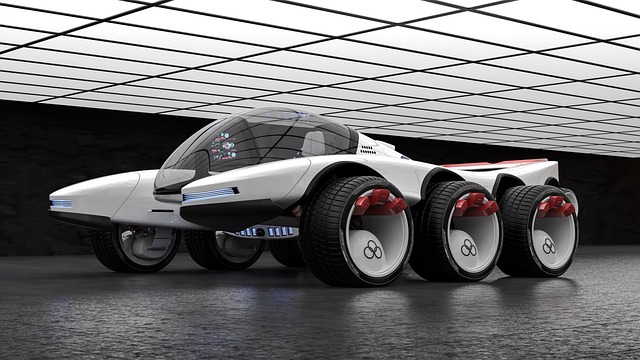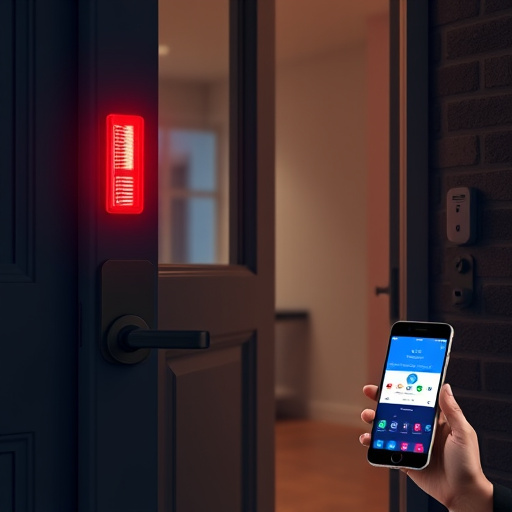The future of personal safety is being reshaped by a wave of innovative technologies, including smart fabrics with wearable sensors, advanced protective gear with communication systems, and AI assistants providing tailored safety advice. These emerging safety products offer enhanced visibility, proactive danger detection, and real-time data for better decision-making, transforming protection into a dynamic, adaptable process that keeps pace with modern life's complexities. Key trends include the integration of sensors, IoT, and AI algorithms into clothing and gear, enabling monitoring of vital signs and environmental hazards, as well as predicting and mitigating potential risks. This shift is driven by consumer demand for innovative solutions and stricter workplace safety regulations, promising significant enhancements in personal safety across sectors.
The future of personal protection is smarter, more adaptive, and technologically advanced than ever before. As societal shifts drive innovation, safety product design is evolving rapidly. This article explores the converging forces shaping the next generation of protective gear, from smart fabrics integrating biometric sensors to AI-driven risk assessment. We delve into recent breakthroughs in Personal Protective Equipment (PPE), advanced materials, ergonomic designs, and customizable solutions enhancing personal safety measures. Additionally, we analyze context-aware wearables and predictive analytics revolutionizing protection for a wide range of professions and scenarios.
- Future Safety Trends: Shaping Personal Protection
- – Exploring the impact of technology and societal shifts on safety product design
- – Discussing key trends such as smart fabrics, biometric sensors, and AI-driven risk assessment
Future Safety Trends: Shaping Personal Protection

The future of safety products for personal protection is being reshaped by a wave of innovative technologies and emerging trends. From smart fabrics to advanced sensor systems, these developments promise to revolutionize how individuals safeguard themselves in both everyday life and specialized industries. Future safety trends focus on enhancing visibility, detecting dangers proactively, and providing real-time data for informed decision-making, ensuring personal safety innovations keep pace with an increasingly complex world.
Emerging safety products leverage cutting-edge safety product technology, integrating sensors that can detect hazardous environments, monitor vital signs, and alert users to potential risks. This includes smart clothing equipped with wearable sensors, advanced protective gear with built-in communication systems, and even AI-driven personal assistants that offer tailored safety advice based on real-time data. These developments in personal safety technologies are set to transform the way we approach protection, making it proactive, adaptable, and highly efficient.
– Exploring the impact of technology and societal shifts on safety product design

The future of safety products for personal protection is shaped by an ever-evolving technological landscape and societal shifts that drive innovation in this critical field. Emerging safety products are no longer merely functional; they are intelligent, connected, and designed to anticipate risks rather than react to them. Advancements in safety product technology include the integration of sensors, IoT connectivity, and AI algorithms that can predict potential hazards and provide real-time alerts, enhancing personal safety developments significantly. For instance, smart clothing equipped with wearable sensors can monitor vital signs and detect abnormalities indicative of environmental dangers or health issues.
These technological breakthroughs are accompanied by a growing awareness of the importance of personal safety among consumers, who increasingly demand innovative solutions tailored to their specific needs. Societal shifts towards more proactive approaches to well-being and increased emphasis on workplace safety regulations are driving manufacturers to create cutting-edge protection gear that combines comfort with high-performance protection. The result is a dynamic market characterized by future safety trends that prioritize adaptability, customization, and integration of advanced materials to meet the evolving demands of a changing world.
– Discussing key trends such as smart fabrics, biometric sensors, and AI-driven risk assessment

The future of safety products for personal protection is being reshaped by innovative technologies, paving the way for smarter and more adaptive gear. Among the key trends driving this transformation are smart fabrics integrated with biometric sensors and AI-driven risk assessment tools. These developments promise to enhance personal safety across various sectors, from industrial work environments to everyday consumer use.
Smart fabrics, for instance, are being engineered with built-in sensors that can monitor vital signs, detect environmental hazards, and even respond to potential threats. Biometric sensors, on the other hand, enable precise tracking of an individual’s health status and movement patterns, enabling proactive safety measures. AI-driven risk assessment systems leverage these data points to predict and mitigate potential risks in real time, ensuring a more dynamic and responsive protective gear ecosystem. Such innovations signal a significant leap forward in personal safety developments, offering not just protection but also intelligent, data-driven solutions for a safer future.





